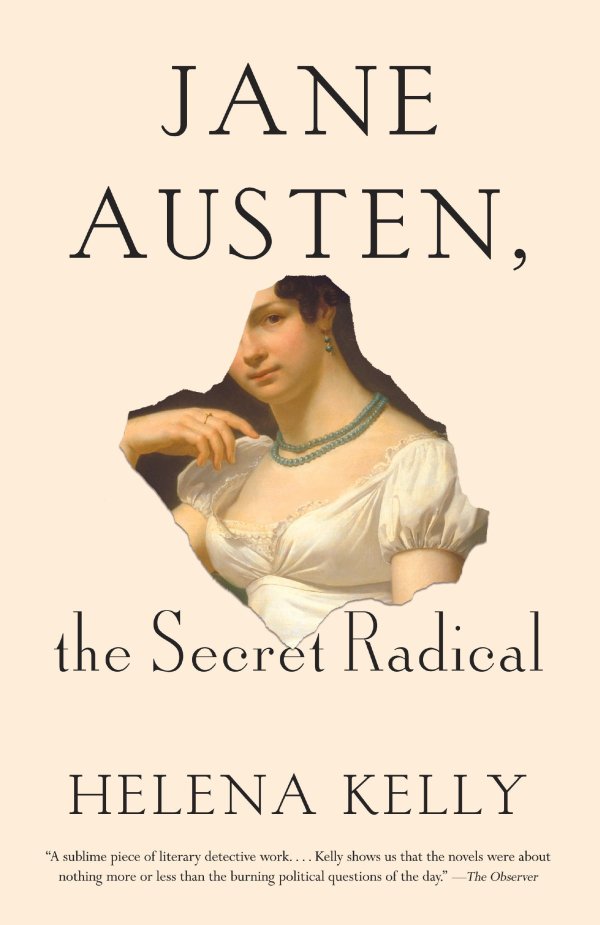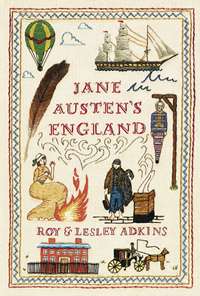From the desk of Tracy Hickman: Was Jane Austen a radical? Was she sympathetic to the “radical reforms” of Charles James Fox and others that included universal male suffrage, the abolition of slavery, and women’s rights? Few would readily place her in the company of Thomas Paine, William Godwin, or Mary Wollstonecraft, but perhaps that... Continue Reading →
A Jane Austen Christmas: Celebrating the Season of Romance, Ribbons & Mistletoe, by Carlo DeVito – A Review
From the desk of Lisa Galek: If you’ve ever wondered how your favorite author celebrated Christmas in the 18th century—or just know someone who has—A Jane Austen Christmas: Celebrating the Season of Romance, Ribbons, and Mistletoe by Carlo DeVito is the perfect package to place under the tree this holiday. A Journey Through Austen's Christmas... Continue Reading →
Downton Abbey – A Celebration: The Official Companion to All Six Seasons, by Jessica Fellowes – A Review
“It’s that time of year when the world falls in love” … with Downton Abbey all over again. The final season starts in less than one month on Masterpiece Classic PBS on January 3, 2016. My anticipation of another season of great drama, romance, and witty retorts runs high. I am, of course, paraphrasing The... Continue Reading →
Jane Austen: In Her Own Words & The Words of Those Who Knew Her, by Helen Amy – A Review
From the desk of Tracy Hickman: We are spoiled for choice when it comes to biographies of Jane Austen these days, but that was not always the case. As Helen Amy notes, it was not until fifty years after Austen’s death that a growing number of readers wanted to know more about her life. At... Continue Reading →
Jane Austen’s Worthing: The Real Sanditon, by Antony Edmonds – A Review
From the desk of Tracy Hickman: Jane Austen sequels thrive on what ifs. What if Darcy’s first proposal had been delivered in a more gentlemanly manner? What if Willoughby had decided to marry for love instead of money? Jane Austen’s unfinished novel, Sanditon, is a different kind of literary “what if” for her fans. The... Continue Reading →
Jane Austen and Names, by Maggie Lane – A Review
From the desk of Tracy Hickman: It seems only natural that an author would be interested in names. My writer friends collect interesting names for future characters and are constantly putting together different combinations. A young Jane Austen playfully tried out a selection of husband names for herself in her father’s parish register of marriages.... Continue Reading →
A Preview & Cover Reveal of Jane Austen Cover to Cover: 200 Years of Classic Book Covers, by Margaret C. Sullivan
From the desk of Laurel Ann Nattress: I am very pleased to have the ironic honor of officially revealing the cover of a new book about Austen-inspired book covers, Jane Austen: Cover to Cover, by Margaret Sullivan. I think it rather handsome myself. My background in design gives it two big thumbs up to the... Continue Reading →
Jane Austen, Game Theorist, by Michael Suk-Young Chwe – A Review
From the desk of Lisa Galek: According to Wikipedia, game theory is “the study of mathematical models of conflict and cooperation between intelligent, rational decision-makers.” So, what the heck does that have to do with Jane Austen and her novels? A lot, as it turns out. In Jane Austen, Game Theorist, we explore how Austen’s... Continue Reading →
Living with Shakespeare: Essays by Writers, Actors, and Directors, edited by Susannah Carson – A Review
From the desk of Br. Paul Byrd, OP: Is there, as an English teacher, anything more intimidating and yet thrilling than teaching Shakespeare? He is, after all, the one author whose works are thought essential to a “good education.” But having just finished a three week unit on Macbeth, I am confident only that I... Continue Reading →
Book Launch of Jane Austen’s England, by Lesley and Roy Adkins
Let’s face it. Life in a Jane Austen novel is a fantasy to us two-hundred years after they were originally set. Who wouldn’t want to wear a pretty silk frock, dance with Mr. Darcy at the Netherfield ball or ride in Lady Catherine de Bourgh’s barouche? But life in Jane Austen’s England was not all... Continue Reading →
The Real Jane Austen: A Life in Small Things, by Paula Byrne – A Review
From the desk of Br. Paul Byrd, OP “This book is something different and more experimental. Rather than rehearsing all the known facts, this biography focuses on a variety of key moments, scenes and objects in both the life and work of Jane Austen…In addition, this biography follows the lead of Frank Austen rather than... Continue Reading →
What Matters in Jane Austen?: Twenty Crucial Puzzles Solved, by John Mullan – A Review
From the desk of Sarah Emsley “The closer you look, the more you see,” writes John Mullan in What Matters in Jane Austen? Elizabeth Bennet learns this lesson in Pride and Prejudice when she reads and rereads Mr. Darcy’s letter “with the closest attention” to understand why he separated Bingley from Jane and why he... Continue Reading →











